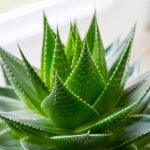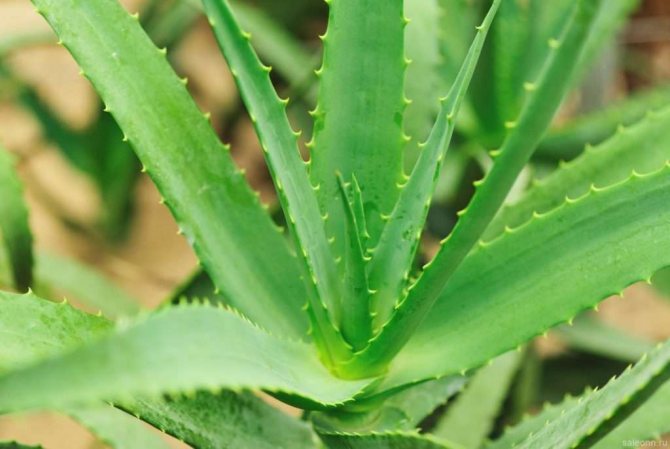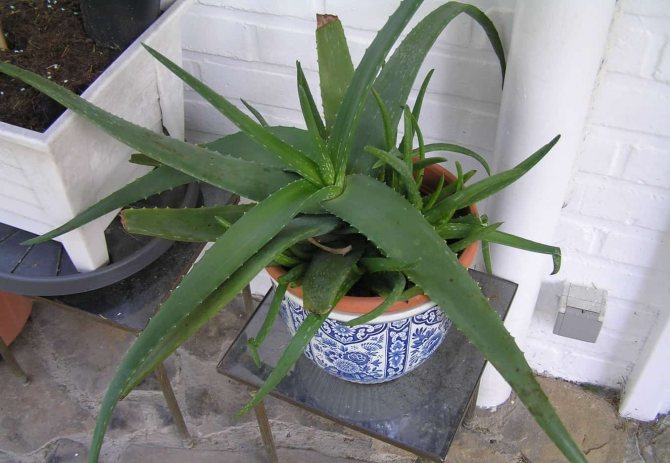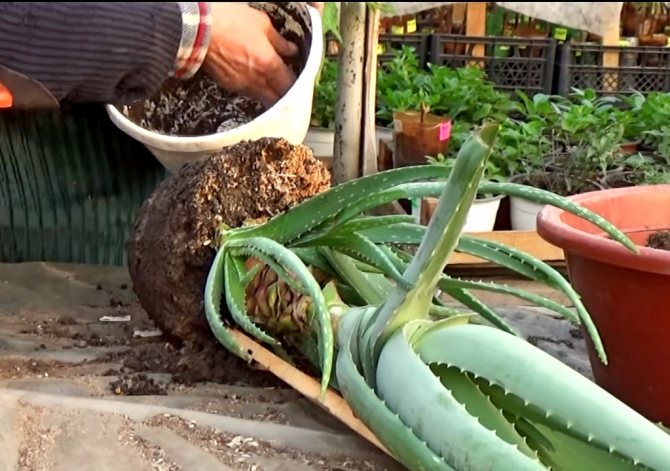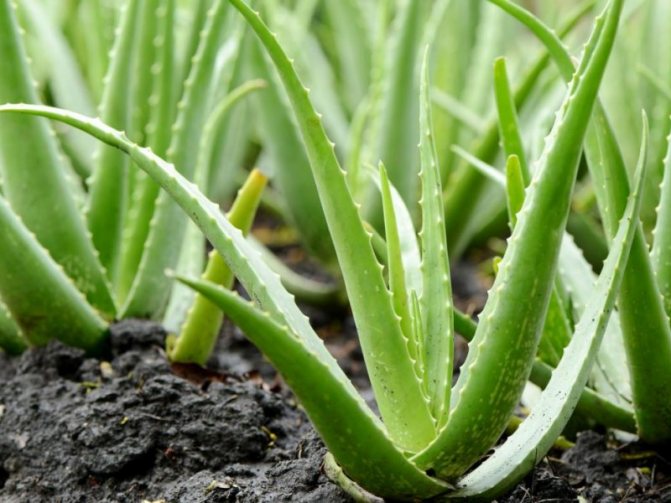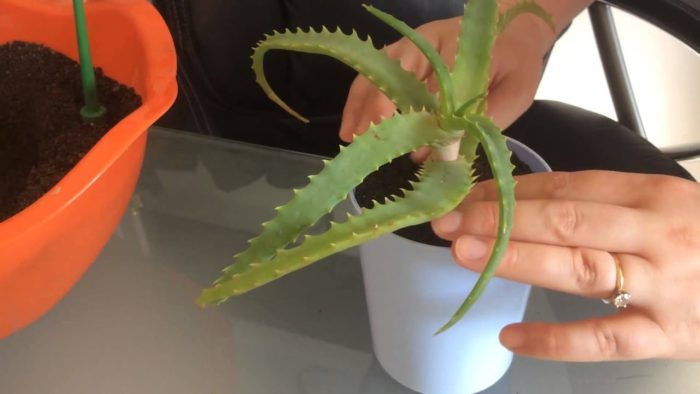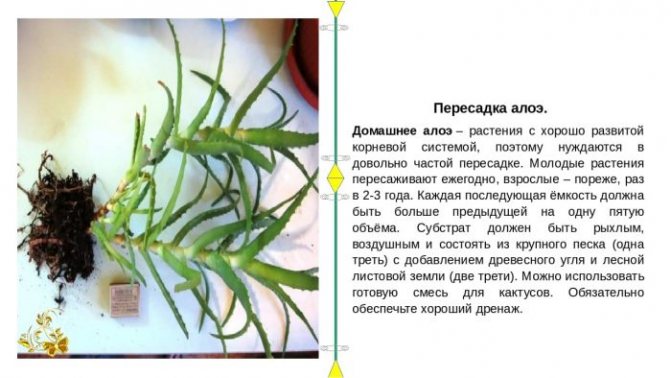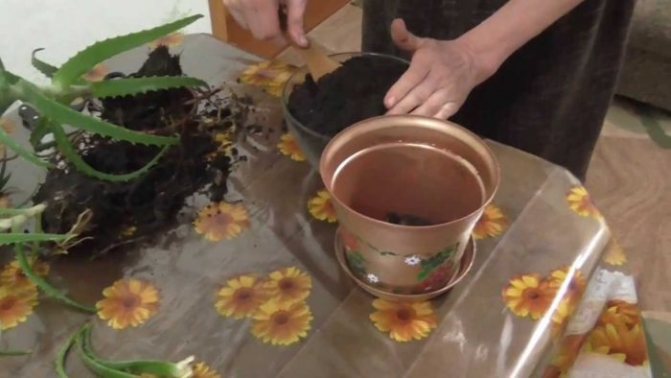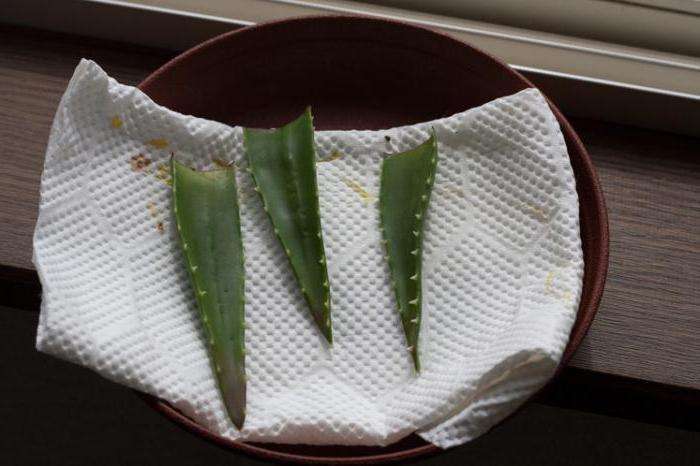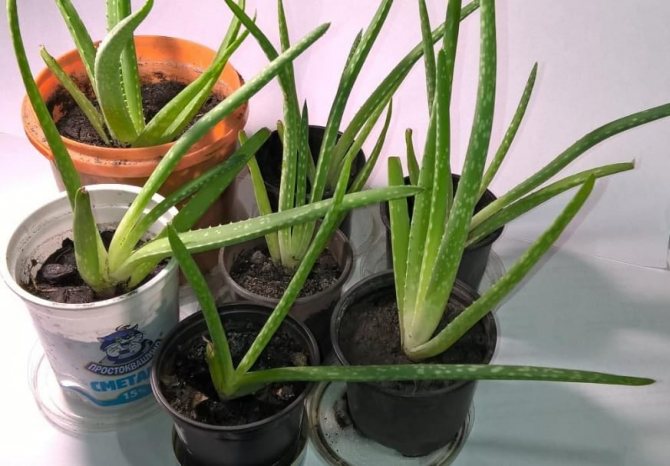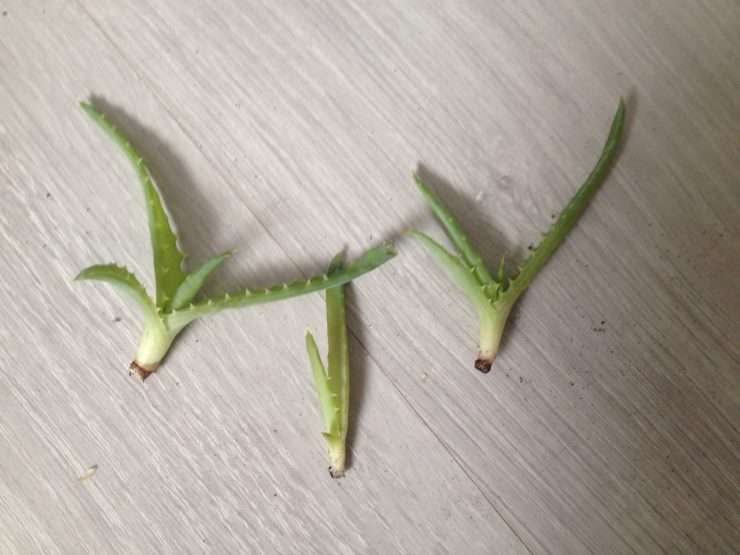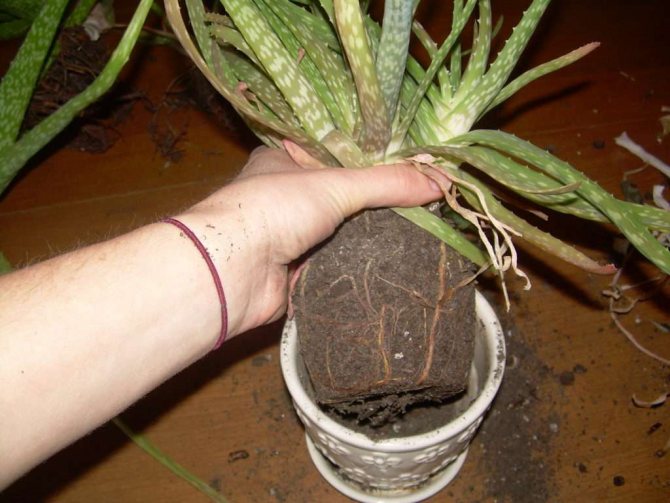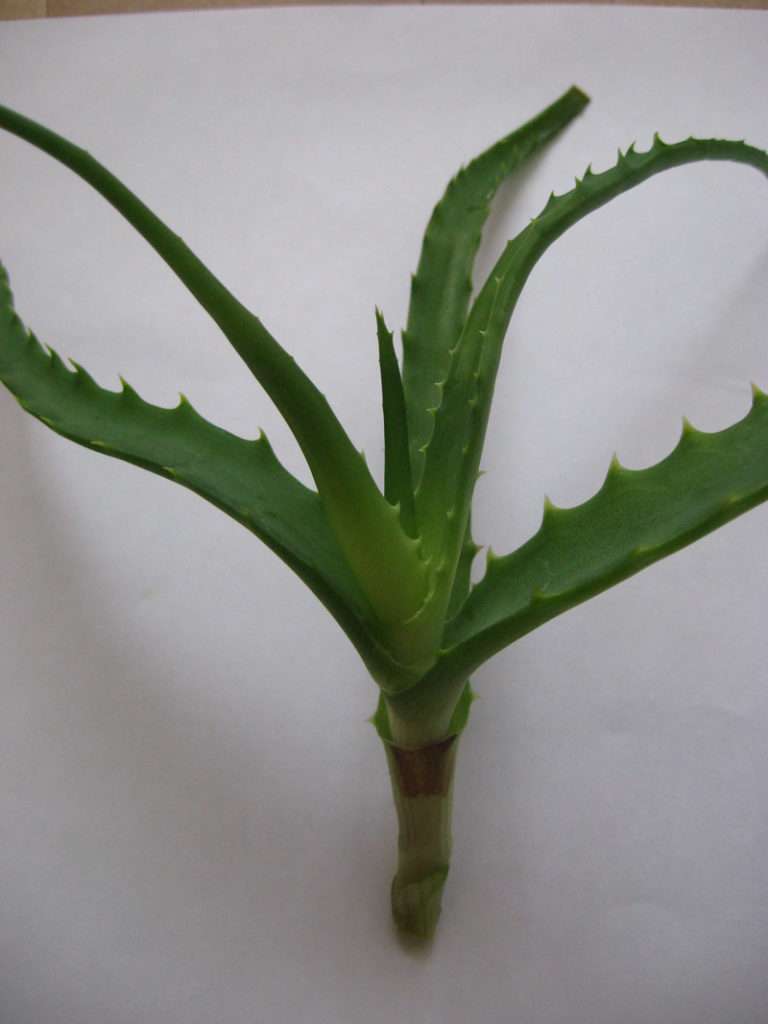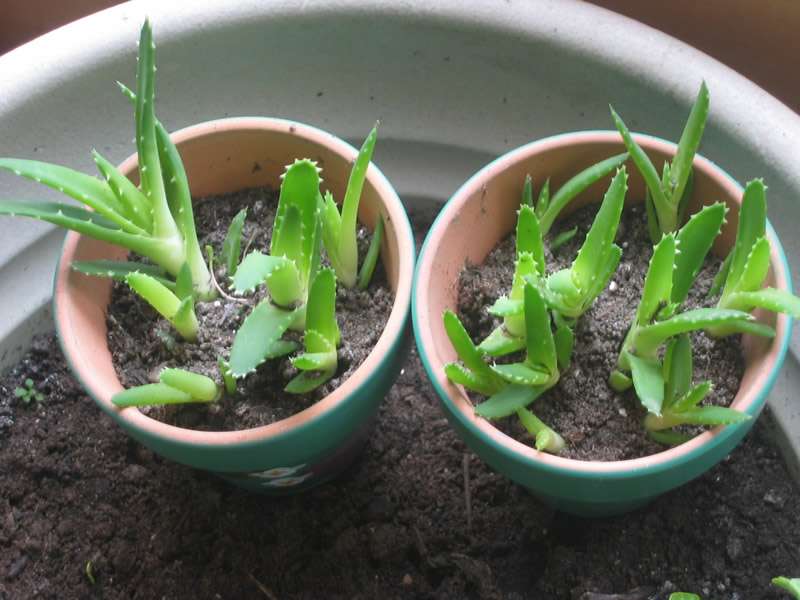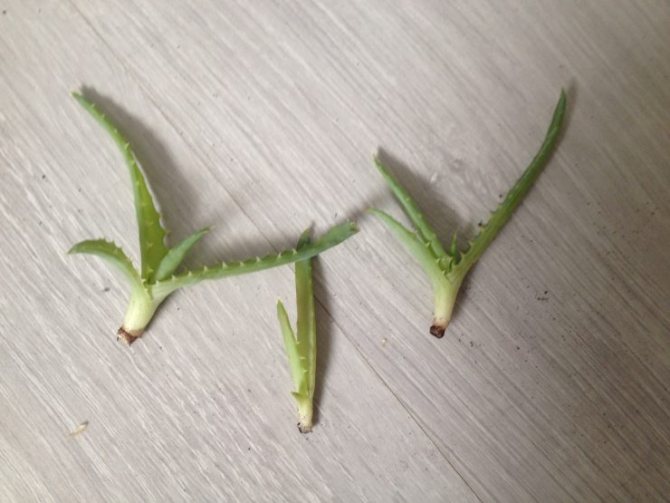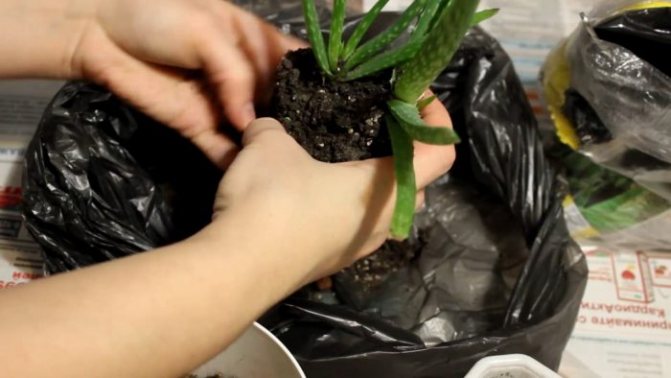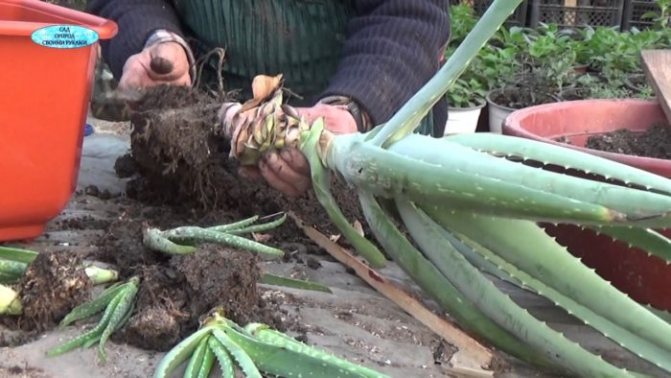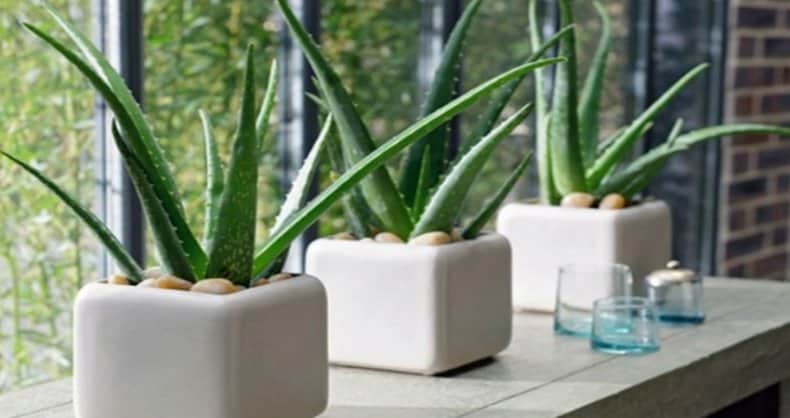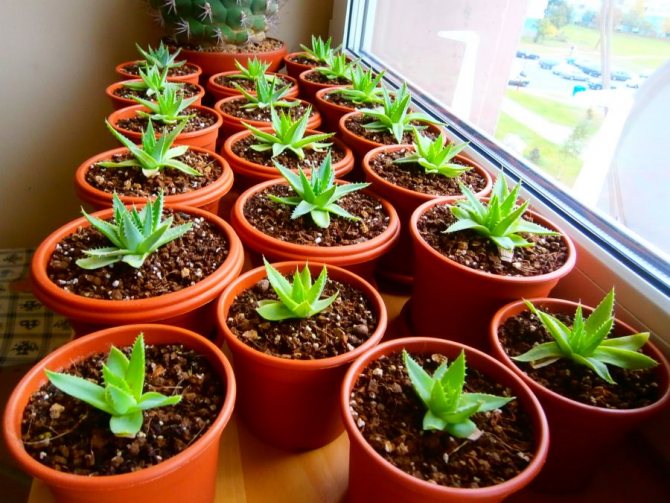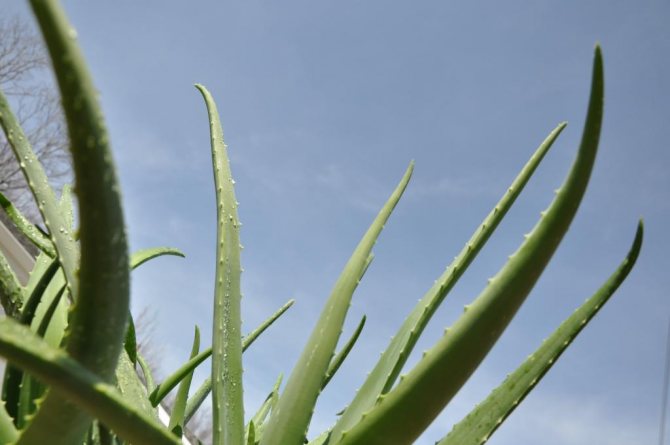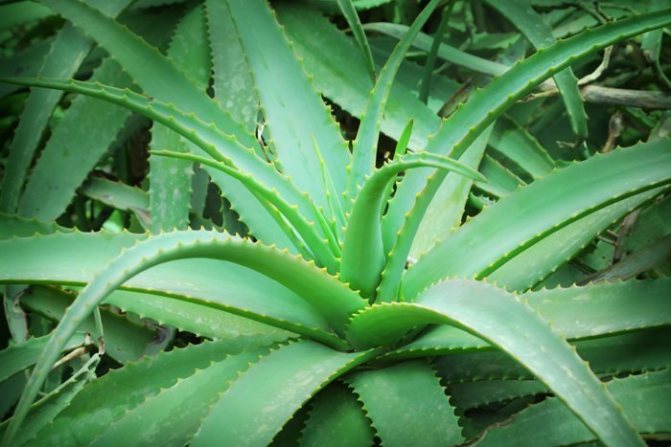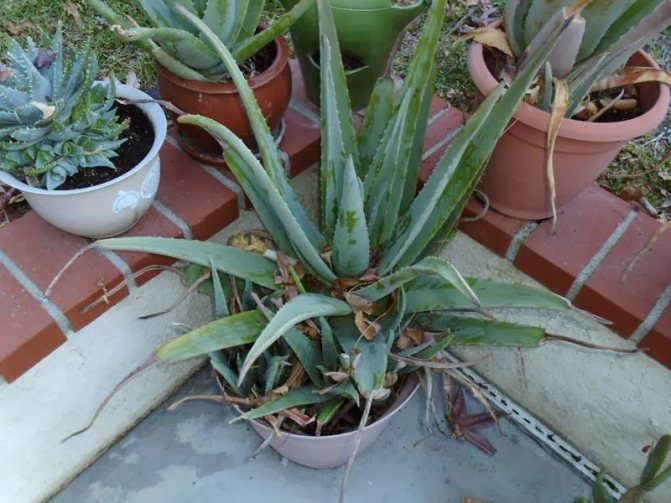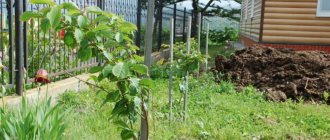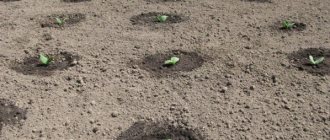Aloe, known for a long time as an agave, was cultivated by our grandmothers for many years. In any country house, in old enamel pots, one could see this unpretentious medicinal plant on the windowsill. Aloe juice helps with the common cold, is used for cosmetic purposes, heals wounds. Finding out how to properly transplant scarlet at home.
Useful properties of aloe
Aloe leaf juice is used as a medicine. In addition to enzymes and phytoncides, the plant contains minerals and vitamins C, a, E and B. As a rule, they take the juice of an adult plant and crushed pulp. Diseases from which the agave helps to get rid of the following:
Fresh articles about garden and vegetable garden
Salvia perennial: tips for growing and care, photos
When to plant strawberry seeds for seedlings?
How to plant daffodils in the fall?
- Recommended for gastritis, pancreatitis and stomach ulcers. Possesses pronounced healing properties.
- With its help, they get rid of deep wounds from burns.
- Indispensable in the treatment of skin diseases. With the help of aloe juice, they relieve psoriasis and eczema.
- Suppresses the development of fungus and infections. Excellent fight against staphylococcus, dysentery and streptococcus.
- Due to the presence of vitamins and minerals, it strengthens the immune system in winter and contributes to the recovery of seriously ill patients.
- It is part of home remedies for pneumonia, bronchitis and tuberculosis.
- It is used to treat spring vitamin deficiency and chronic fatigue. With regular use of aloe vera preparations, headaches disappear.
If we use seeds
Aloe seed propagation is the most laborious and time consuming way. Difficulties are associated with obtaining seeds (the agave rarely blooms indoors), and with planting and caring for sprouts at home in the first year.
In order to get strong and healthy seedlings, you need to know how to soak aloe seeds before planting. In the process of soaking, the moisture content of the gauze in which the seeds are located should be strictly controlled: an excess of moisture will lead to decay, and a deficiency will not allow the sprouts to break through.
It is best to start planting aloe seeds at the end of winter. The sprouted sprouts are placed in a light, loose mixture of sand and garden clay. At room temperature and sufficient moisture, pairs of young leaves quickly emerge from the shoots. Before planting aloe in separate small pots, they dive. After a year, be sure to plant the aloe in a larger bowl.
The right time to transplant aloe at home
It is better to plan aloe transplant in the spring. At this time of the year, the plants emerge from the dormant period and begin to develop intensively. The accelerated metabolism will help the indoor flower to quickly adapt to the new place with minimal risk to health. After inevitable damage, the root system will successfully recover and begin to absorb moisture and nutrients from the new soil. In a warm room, you can start transplanting earlier than in a cold one.
The summer season is also considered favorable for transplanting aloe.The least suitable time of the year is autumn and winter. At this time, the succulent does not have enough light and heat to grow. However, if the plant urgently needs a transplant, there is no need to wait for the right season.
In the first years of life, aloe must be replanted annually. After reaching 3 years of age, the flower can be relocated 1 time in 2 years. Plants over 5 years old change the soil no more than 1 time in 3 years.
Many novice flower growers do not know how to properly transplant a plant purchased in a store. It must be moved to a new pot no earlier than 3 weeks after purchase. Until this point, aloe is kept away from other plants. During the quarantine, the new tenant will get used to the conditions of the apartment and prepare for contact with indoor flowers. It is not worth delaying the relocation to a new soil. The plant can get sick and even die.
What is this plant and why transplant it?

Aloe belongs to the genus of succulents. These are plants that accumulate moisture in the leaves along with other beneficial substances. It grows naturally on sandy soils in dry climates. At home, it needs to be repotted periodically when the pot becomes too cramped. You can also propagate the agave in several ways to get even more healthy juice.
The best time to transplant a plant is spring and summer. In the cold season, life processes slow down, and the flower may not take root. However, propagation by cuttings can continue almost all year round.
The right substrate for planting aloe
A tropical inhabitant is not picky about the composition of the soil, does not need to fill it with nitrogen. The basic requirement is that the lighter the soil, the better. It will respond to a compacted one with slow growth, thin weak leaves that turn yellow at the tips. Acidity is a slightly acidic reaction (at pH 5.0-6.0), neutral (at pH 6.0-7.0).
Substrate options can be as follows:
- sod land, leafy, coarse-grained sand with a handful of peat (in a ratio of 2: 1: 1);
- forest land (sheet), coarse sand (3: 2) plus charcoal;
- clay-sod land, sand, forest leaf land (1: 1: 1) plus 1/5 of slightly acidic peat.
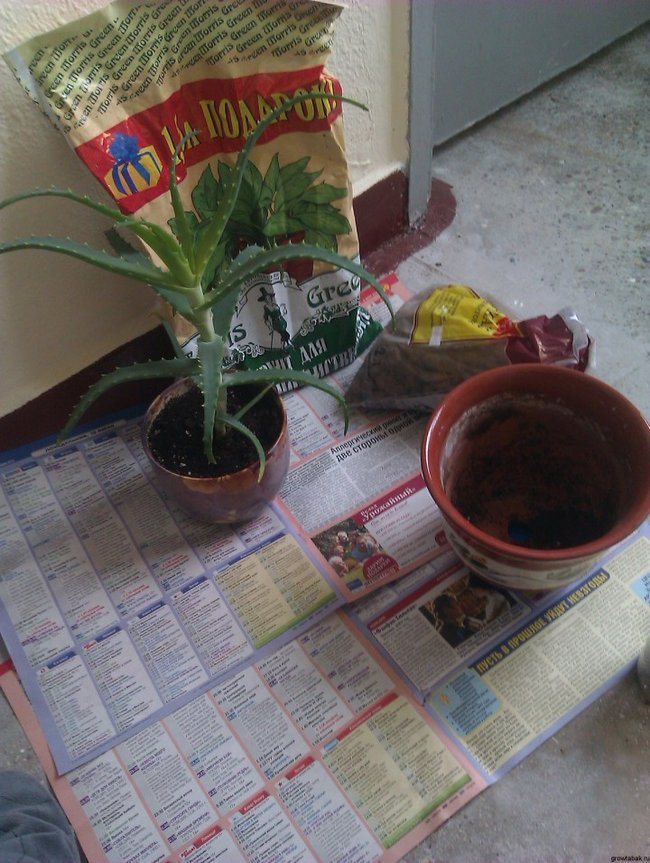

Consequences of liquid stagnation and poor ventilation in a flowerpot
As already said, aloe does not tolerate stagnant liquid in a pot... If there is no drainage layer or it is of poor quality, then the water will linger for a long time. In this case, the root system will rot. For aloe, such a phenomenon is disastrous, since the flower grows in the wild in dry lands, even in deserts. It tolerates drought more easily than an excess of fluid.
An equally dangerous moment for aloe is poor ventilation in the flowerpot. When the air cannot penetrate into it unhindered. This is due to the lack of natural disintegrants in the composition of the soil. The consequences of compacted soil are yellowness and drying of the leaves.
For a flower to develop correctly, you need to know more information about it. We recommend that you familiarize yourself with other materials:
- Why and how should you prune your aloe?
- How and when does the plant bloom?
Lighting requirements for growing aloe
Since aloe is a native of the tropics, it simply adores the sun. You can place it on the south or east window, but still in the spring, when the plant is moving away from hibernation and, as it were, getting used to sunlight, it is worth covering it from direct sunlight.
Aloe is very fond of fresh air; in the warm season, it can be taken out onto a balcony or terrace. In response to this, the plant will delight you with strong shoots and lush green leaves. Care should be taken so that after rain or watering, water does not accumulate in the rosettes of the leaves.
If you take the plant outside after wintering in an insufficiently lit room, then you should do it with caution to avoid sunburn.
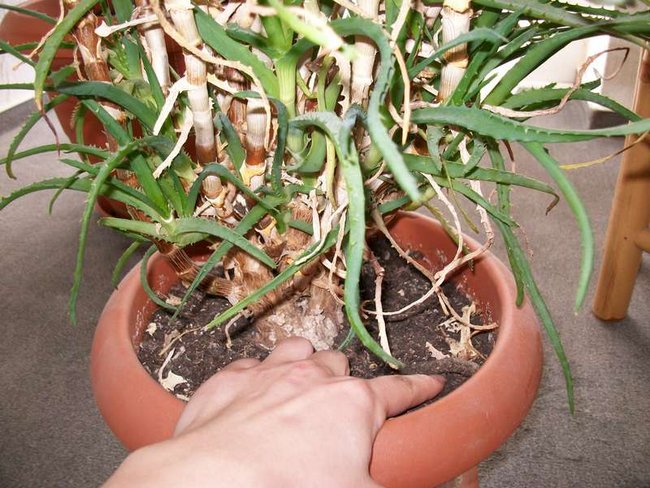

When can you divide a plant?
When the plant is "adult", then you can see that it outgrows the space in the flowerpot, this indicates that it needs to be divided. It is quite simple to do this, you just need to remove the branches that appear for their further transplantation into separate flower pots. The best months to divide aloe are May, June. Since this is the period of active growing season.
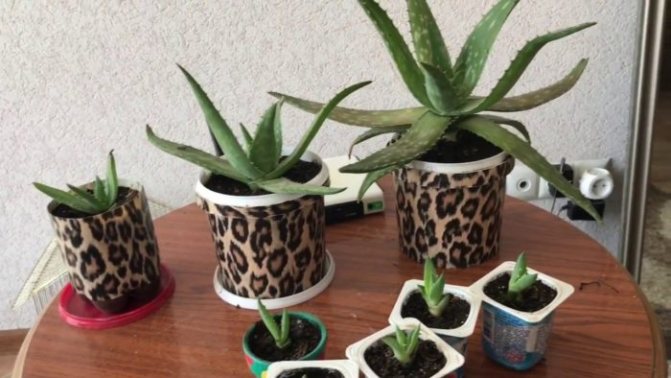

When dividing an agave, you need to remember the rules that will help not only plant it, but also preserve young shoots:
- monitor the root system. To do this, make sure that each branch has a supply of its own roots. They can be easily broken off from the stem, so you need to be careful;
- use a sharp knife. You need to separate the cuttings with a sharp tool. This will allow you to make an even cut in one motion;
- minimize damage. It is not difficult to separate succulents, the main thing is not to cut the roots or stems.
By following these rules, you can quickly divide and propagate an adult plant.
Temperature conditions for growing aloe
The most comfortable temperature for aloe in the summer is 22-26 ° C. Air humidity for a plant does not really matter. The plant can overwinter at a temperature of 13-15 ° C, but it is very important to avoid drafts during this period, otherwise the aloe can simply freeze.
Fresh articles about garden and vegetable garden
Eucharis leaves turn yellow and die
Flowers for the school office
Peach shelter for the winter
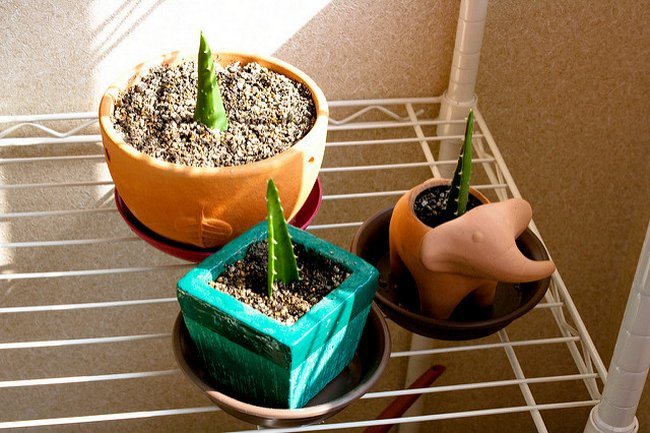

Which pot to choose?
If you are going to move the aloe to a new dish, you need to know the requirements for the size of the pot. If the dishes are too large, the soil leaches out, the roots rot, and the plant stops developing. Pay attention to the material from which the pot is made.
Attention! A mandatory requirement for any pot is the presence of drainage holes in the bottom. A planter with a solid bottom is not suitable for this purpose.
How to find the right size?
There are several ways to determine the optimal pot size. It should be such that between the roots in a straightened form and the walls, the bottom of the vessel there is 1–2 cm of free space.
Determine the required dimensions and crown. In a properly selected container, the diameter is 2 times less than the distance between the edges of the opposite leaves. The older the plant, the more powerful its root. Therefore, the pot is taken more every time.
How to transplant aloe without a root
If the flower grows too tall, you can cut off the top and form a separate plant. The lower leaves are immediately used to obtain juice or gel, which are then added to cosmetics and medicines. The transplant procedure is very simple:
- the top with 6-7 leaves is cut with a knife;
- the shoot is placed in a jar of water and waited for it to take root;
- the plant is planted in a pot with a suitable substrate.
The method for transplanting aloe without a root is suitable for large adult plants. The leaves become suitable for medicinal purposes for 3-4 years of life, then they are cut off. As a result, the flower turns out to be tall, and the leaves are only at its top.
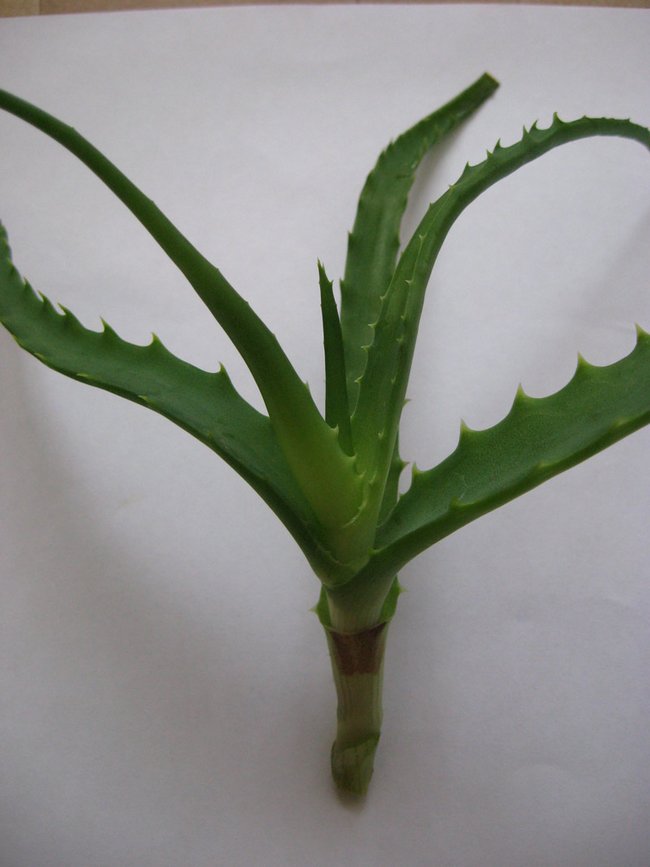

We propagate by transplanting
Most species of aloe reproduce both by apical, lateral cuttings, and by shoots growing from stolons, underground rhizomes. Leaves are also used, less often seeds. Basal shoots are called "babies".
Attention! The cut of the cutting must be dried, sprinkled with ash. They are not placed in water to avoid decay. One of the methods: wrapped in thin paper, put the layers in the refrigerator for a day.
The dried stalk is buried in the prepared soil mixture to a depth of no more than 2 cm. Further care is standard: maintaining the soil moisture level, spraying if necessary.
Reproduction by apical cuttings and leaves. The top of the aloe with 4-6 leaves is separated, dipped into water, deepening the tip by 1.5-2 cm.The second option is dry: after drying, the cut is rooted in a mixture of peat with raw sand, deepening by 2 cm. The top is transplanted into a pot when roots appear.
Do the same with aloe leaves. Having separated the most fleshy, they dry it and wait for the appearance of the roots, dipping it into water or damp sand.
Reproduction by layering. Transplanting, or rather, seating "kids" of aloe is a simple matter. They are carefully dug out, separating them from the rhizome. The cutoff already has its roots, and it is immediately planted in a small container, deepening the root neck of the stem by 2-3 mm.
Advice. If the roots or part of the stem are damaged during separation, the cuttings are not planted. For three or four days, the "baby" needs to lie in the air to dry out the break. Sometimes it is advised to dust the place of the cut with charcoal.
As you can see, replanting aloe is easy. Yes, and there is time to hone your skills: the "home doctor" lives for a long time - not without reason its tree-like form is called an agave. And knowing all the subtleties of "resettlement", you can increase the population and breed at home a whole collection of these unpretentious succulents.
Rules for caring for aloe at home
Caring for aloe is quite simple, here are the basic recommendations: Watering is not necessary often, since the plant can calmly do without water for a long time. In the warm season, watered every seven days. With the onset of cold weather, watering is limited to two times a month. Abundant watering is not recommended. Stagnant water will cause root rot. To avoid this, use a drainage system. Be sure to leave holes at the bottom for water to drain. The temperature of the water used for irrigation should be between 25 and 35 degrees above zero. It is useful to place the pot in a tray of water so that the roots of the plant are saturated with moisture. Growing a flower requires regular feeding.
Aloe should be fed in spring, summer and autumn. Do this once a month. A special mixture for cacti or succulents is used for fertilization. Mineral formulations in liquid form are well suited.
Winter rest is necessary for the plant, there is no need to disturb it at this time, less watering, no additional fertilizing, no transplants. Provide fresh air. Ventilate the area, but avoid drafts.
Probable problems
How to grow healthy aloe? It is necessary to be attentive to his condition. The most annoying problem is rotten roots. Even if there are a small number of healthy roots, the plant can be reanimated. To do this, remove all damaged areas of the root system and place the roots in a solution with an antifungal or antibacterial agent - it all depends on the cause of decay.
Then the plant must be left to dry for 4-5 hours, and then planted in the substrate, but not watered. For 10-14 days, you need to monitor the succulent. If there are no putrefactive processes, it should be moistened sparingly and rarely until the flower is fully restored.
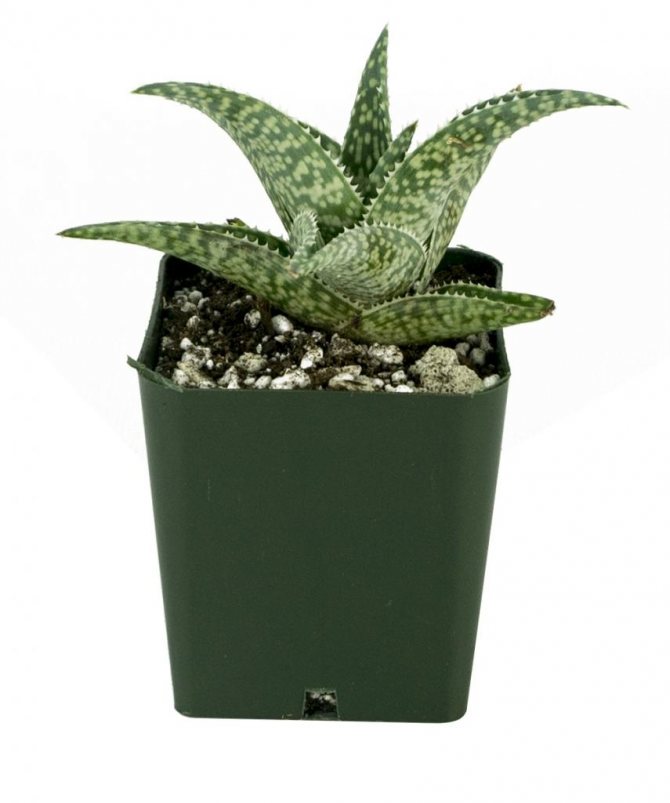

A common problem during planting is the egg-laying of mealybugs between the roots. The plant must be washed in a soapy solution, turned upside down by the roots so that all the liquid is removed. The pot and substrate must be replaced, the old ones thrown away.
The succulent plant must be treated with an insecticidal preparation and planted in a new container. It is necessary to ensure that the worms do not arise again. Usually one procedure is not enough, and the aloe is again treated with a different preparation.
Reproduction
This is another important step in how to care for indoor aloe. As a rule, such procedures are performed simultaneously with plant transplantation. The easiest way to get a new flower is from an aloe leaf. To do this, during the transplant process, you need to cut off several mature leaves, on which rather hard thorns have already formed. After that, they are left to dry for a while. In the next step, the leaf plates are planted directly into the ground. The land must also be prepared.
In this case, it is necessary to mix leafy earth, sand and slightly moisten the soil. After that, the future sprout in the pot must be placed in a fairly bright place, where the temperature is 15-18 degrees Celsius. It is worth being patient, since the first root of a young seedling does not appear quickly. This does not mean that you need to start zealous and water the plant every day. This is completely normal, so you just need to wait a little longer.
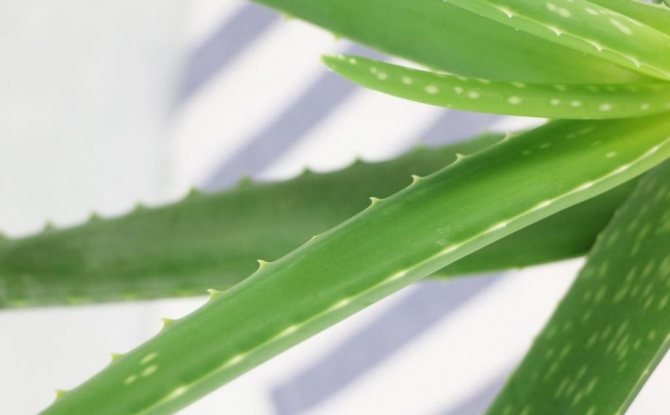

If you take good care of such a young plant, feed it and monitor its health, then after three to four years flowers will begin to appear on it. Aloe vera (how to care for it, described in the article) is really capable of blooming. Few people know about this. However, aloe pampers with its beautiful inflorescences only those flower growers who are most fortunate.

